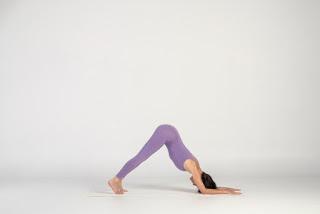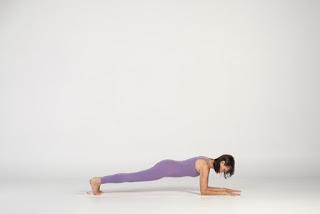Q: A friend of mine mentioned that due to tendonitis in her fingers she is unable to do Surya Namaskar and she was wondering what other alternatives she can use when it comes to putting her palms on the ground. Like in Adho Mukha Svanasana, Uttanasana, Plank etc. Can you please weigh in on this topic?
A: I’ll start with some background on tendonitis. Tendonitis is a condition of the tendons that connect muscles to bones. Usually due to overuse (such as typing on this darn computer keyboard!) of the fingers, hands or wrists, tendons can become inflamed, which leads to swelling, stiffness and pain. The initial treatment for an acute tendonitis usually includes rest, ice, compression, and elevation. The typical western medicine approach for ongoing inflammation is to immobilize the affected hand(s) with a brace or splint to allow the inflammation to resolve. Sometimes anti-inflammatory medications are also prescribed. In rare cases where conservative treatment is not helping, localized injections of steroids or surgery might be recommended. After recovery, eliminating or reducing the activities that likely caused the tendonitis can reduce the chances of it reoccurring.
So to begin, I highly recommend that if your friend has not yet been evaluated by their doctor that they do so to confirm the diagnosis and get some recommendations on western approaches to the condition could help. They should also consider seeing a physical therapist for hand specific exercises for finger tendonitis, as physical therapists have techniques for address this condition that would be worth learning about.
As far as yoga practice goes, because you haven’t given me much information about your friend, I can only suggest some general ideas for addressing this condition using yoga to complement this western medical treatment. Allowing the hands to rest meshes nicely with the idea of immobilization used in western treatment. To me, that translates as limiting both strengthening actions or stretching actions of the fingers and hands for a while. One direct way you can achieve this in an active asana practice is to:
- Avoid bearing weight on the hands, such as in Cat-Cow, Hunting Dog, and Downward-Facing Dog poses, and Plank pose, by placing the forearms on the floor or blocks and keeping the hands and fingers neutral.


- Avoid interlacing the fingers and taking the wrists into flexion or extension, as you might in Arms Overhead Pose with bound.
- Avoid hand mudras that involve a lot of finger flexion, twisting, or extension or that require lots of finger strength, such as Apana mudra. Stick to mudras that are simple and easy on the fingers, such as Anjali mudra (Prayer position).
- Use your asana practice to mindfully pay attention to your fingers and notice which actions feel better or worse. This may help you to get clearer on which daily activities, work habits, or hobbies might be contributing to the finger tendonitis. This in turn may allow you to make some needed changes in those areas of your life.
These options should give your friend some ways of working with the poses that most likely impact the fingers and hands. As the symptoms improve, you can gradually re-introduce all of your normal poses, practicing mindfully and carefully so you don’t re-aggravate the tendons.
Although I have not addressed hand tendonitis in the past, I have addressed other issues related to hands and wrists, including arthritis of thumbs and hands, and wrist pain. So you might take a look at the following posts for ideas in addition to what I suggested above:
Arthritis of the Thumbs
Yoga and Arthritis of the Hands
Friday Q&A: Wrist Problems
—Baxter
Subscribe to Yoga for Healthy Aging by Email ° Follow Yoga for Healthy Aging on Facebook ° Join this site with Google Friend Connect

